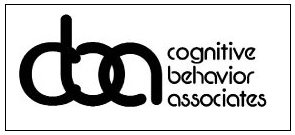Body Dysmorphia
Today’s culture is obsessed with appearance more than ever before. Images from magazines, film, TV, and the Internet flood society with narrow views of beauty. For countless reasons, this can be damaging to individuals and society as a whole. One of the most negative aspects of our image-focused culture is the development of Body Dysmorphia Disorder, or BDD.
People with BDD do not see their appearance in an objective or logical way. The focus is on various details of how they look. They may obsess over the size of their nose, hip shape, the length of legs, height, the waviness of hair, etc. The list of problem body areas can sometimes seem endless.
Of course, beauty is in the eye of the beholder. Every culture and group has a different view on what is attractive. In some countries, short hair is desired. In other places, skinniness is not as coveted. It is very arbitrary. Yet, those with BDD cannot see the nuances of beauty. For them, they are never enough.
Such feelings wreak havoc on one’s mental state. The narrative often is: If only (insert body issue) was different. I would be beautiful, others would love me; I could be worthy and enough. But then the converse is: I am not beautiful, no one will love me and I am worthless. This critical inner dialogue can be devastating.
Body Dysmorphia Treatment Options
One of the most effective treatments for Body Dysmorphia Disorder is cognitive behavioral therapy (CBT). Of all psychological treatments, CBT is the only one with research and clinical experience that supports effectiveness for BDD. CBT helps clients see themselves in a more positive and realistic way. CBT helps clients understand that body image is subjective. When clients can reach this perspective, they can have more compassion for themselves. CBT tackles the repetitive behaviors and negative thoughts of BDD.
The therapists at Cognitive Behavior Associates (CBA) use many strategies to help those with BDD. Client’s begin to identity the maladaptive interpretations that have created a negative body image and rigid interpretations of beauty. CBT helps to develop a more holistic view of self by working to restructure a client’s automatic thoughts leading to a healthier self-image. With CBT, standing in front of a mirror can be a simple experience instead of a terrible nightmare. The goal is to remove the focus on perceived beauty flaws.
Exposure and Habit
Exposure and habituation protocols are often integrated into a client’s treatment plan. With exposure and habituation, clients participate in more challenging situations in a gradual progression. Each time, they push themselves a little further and move closer to managing specific situations, body focused thoughts and behaviors. This approach addresses avoidance and works to slowly decrease the anxiety response one’s brain has when it reacts to triggers.
Avoidance behaviors include mirrors, physical contact with others, social situations, and more. It also addresses compulsive behaviors and rituals involving beauty such as constantly looking at one’s body, comparing to others, excessive visits to doctors and dermatologists, obsessing over make-up, etc. Unfortunately, when people use avoidance or compulsive behaviors to reduce anxiety, they actually can make their BDD worse. Clinicians and client work to address triggers directly, so that a client can learn to manage anxiety, thus reducing reliance on avoidance and compulsive behavior.
Acceptance and Commitment Therapy (ACT)
Another therapeutic approach is Acceptance and Commitment Therapy (ACT) which is based in the ancient art of mindfulness which applies to countless aspects of life. For Body Dysmorphia Disorder, this type of therapy focuses on helping clients observe their body in the present moment with a more helpful understanding of social pressure or negative thoughts, without judgement or attachment to those thoughts. As a result, clients begin to notice negative thought patterns and learn how to stop going down the road of thinking patterns and behaviors that are damaging. ACT can also lead to using more helpful body self-care, instead of engaging in harmful rituals.
With many strategies, therapists may assign homework. Clients work on these assignments in between therapy sessions. Such work can help clients learn and strengthen new skills. In turn, they become better able to handle triggers and manage new situations that affect BDD.
Family and BoDy Dysmorphia
Lastly, family members can be involved in CBT therapies regarding Body Dysmorphia Disorder. Family members unfortunately might be unaware of how they are making BDD worse for their loved ones. Sometimes reassuring a person about his or her appearance can actually be harmful. In these situations, the reassurance just strengthens the comparisons and negative thoughts. The family members typically have good intentions, but the results are damaging. By including family members in CBT, more people in the client’s personal circle are able to help. The overall therapy becomes more effective.
CBT for BDD
Ultimately, no one needs to suffer with Body Dysmorphia Disorder. Beauty and attractiveness are completely subjective. When one sees their appearance through a negative and self-critical lens, the results can be very sad and devastating. Fortunately, CBT can help. And the therapists at CBA are experts in CBT. They know how to employ CBT strategies for those suffering from BDD. With the right support systems and with hard work, clients can overcome BDD and lead happier, healthier lives.
Click here for more info on the Mayo Clinic's website.

